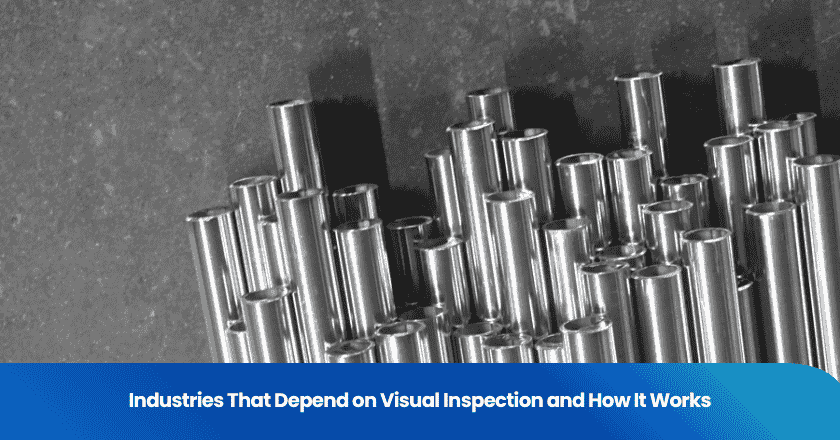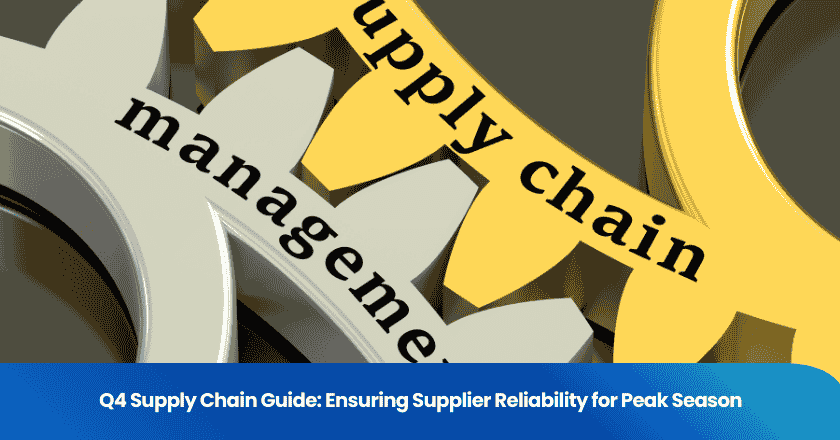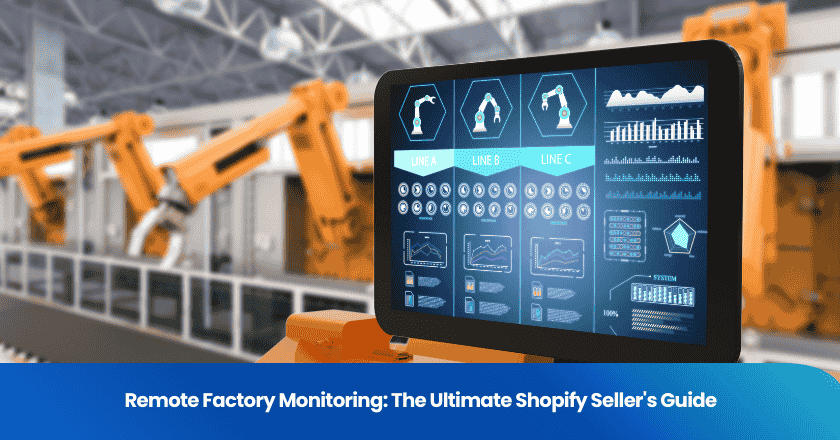
You might wonder which industries count on visual inspection every day. Manufacturing, automotive, electronics, oil & gas, aerospace, agriculture, construction, pharmaceuticals, medical devices, and robotics all rely on it. Visual inspection is a cost-effective way to catch defects early, so you avoid expensive repairs. It keeps your workplace safe by spotting hazards fast. You see it used for non-destructive testing, which means you can inspect equipment without damage. Visual inspection is efficient, versatile, and helps you meet strict compliance standards across these industries.
Visual Inspection Is Essential
Definition and Purpose
Visual inspection is a process you use to check the quality and safety of products by looking at their surfaces. You rely on your senses to spot cracks, corrosion, or misalignments. This method is a key part of quality control and non-destructive testing. You can catch problems early, which helps you avoid costly repairs and keeps your workplace safe. Visual inspection is valued for its simplicity and cost-effectiveness. It forms the foundation of quality control processes in many industries. You use visual inspection techniques to make sure products meet strict standards and regulations. A visual inspection checklist helps you stay organized and thorough during inspections.
Visual inspection is a cornerstone of reliability and safety in industries like manufacturing, oil and gas, and construction. You use it to identify visible defects and maintain compliance with safety standards.
- Visual inspection is a non-destructive testing method.
- You evaluate the condition and quality of products by examining their external surfaces.
- You identify issues early, ensuring products meet quality standards and safety regulations.
Manual and Automated Methods
You can perform visual inspection manually or use automated systems. Manual inspection relies on your judgment and experience. You look for surface defects, misalignments, and other problems. Automated visual inspection uses machine vision technologies, cameras, and AI algorithms. These systems work at full production speed and deliver consistent results.
| Aspect | Manual Inspection | Automated Visual Inspection |
|---|---|---|
| Speed | Limited by human focus | Works at full production speed |
| Consistency | Varies between inspectors | Same results every time |
| Accuracy | Minor flaws often missed | Detects tiny, complex defects |
| Fatigue | Inspectors tire over time | System runs without breaks |
| Data | Little or no data | Stores inspection data |
Automated visual inspection can reduce defect rates by up to 50% and boost productivity by around 30%. You get better accuracy and reliability, especially for precision tasks in electronics and aerospace. Machine vision technologies help you detect defects that are hard to see with the naked eye.
Key Technologies
You use a range of visual inspection techniques and technologies to improve detection and reliability. High-resolution cameras, AI-powered image analysis, and machine vision technologies are common in automated systems. Drones and robotic systems help you inspect large structures and confined spaces. Augmented reality overlays digital information to guide your inspection. Magnetic particle testing is another technique you use to find surface defects in ferromagnetic materials.
| Technology | Function |
|---|---|
| Automated Visual Inspection | Uses cameras and AI for defect detection in manufacturing |
| Drones | Provide aerial views for inspecting large structures |
| Robotic Systems | Navigate tight spaces for real-time visual data |
| Augmented Reality | Enhances inspection with digital overlays |
| AI-Powered Image Analysis | Optimizes workflow and improves defect detection |
| High-Speed Cameras | Capture fast processes for detailed analysis |
| Magnetic Particle Testing | Finds surface and near-surface defects in metals |
Visual inspection is essential for quality control, reliability, and safety. You use these techniques and technologies to meet the demands of different industries and applications.
Applications Across Industries
Manufacturing
You see visual inspection everywhere in manufacturing. You use it to check for surface defects, misalignments, and assembly errors. Automated visual inspection systems scan products at high speed, catching tiny flaws that human eyes might miss. You rely on machine vision technologies to boost precision and reliability. These systems help you spot problems early, so you avoid costly rework and scrap. In smart manufacturing, you use visual inspection techniques to keep quality control processes running smoothly.
A visual inspection checklist helps you stay organized and thorough during inspections.
You get benefits like improved efficiency, reduced costs, and higher product reliability. Visual inspection is a key part of industrial applications, making sure your products meet strict standards.
Automotive
You depend on visual inspection for quality control in automotive production. You use it to examine car bodies, engines, and brakes for wear, cracks, or alignment issues. Automated visual inspection systems use cameras and AI to check welds, seams, and paint finishes. You catch assembly errors before vehicles leave the factory. Machine vision technologies help you verify dimensions and detect surface defects with precision.
You use visual inspection techniques to ensure product conformity and reduce the likelihood of defects. This approach increases safety and reliability for drivers.
Electronics
You rely on visual inspection to maintain quality control in electronics manufacturing. You use it to spot soldering issues, component misalignment, and electrical faults on printed circuit boards (PCBs). Automated visual inspection systems use high-resolution cameras and machine vision technologies to catch defects that are invisible to the naked eye. You check for poor solder joints, incorrect component placement, and physical damage.
- Soldering issues – Cold joints, excess solder, or bridges between pins.
- Component misalignment – Even a fraction of a millimeter off can break a board.
- Electrical faults – Shorts, open circuits, or missing traces due to manufacturing errors.
- Poor Solder Joints: Ensuring connections are solid and properly formed to prevent intermittent failures.
- Incorrect Component Placement: Checking that all components are correctly oriented and securely attached.
- Physical Damage: Inspecting for scratches, cracks, or other damage that may affect performance.
You use visual inspection across industries to keep electronics reliable and safe.
Oil & Gas
You use visual inspection to protect equipment integrity and safety in oil & gas. Early corrosion detection helps you prevent leaks and environmental hazards. You reduce repair costs and downtime by catching problems before they escalate. Visual inspection techniques support predictive maintenance, extending asset lifespan.
- Early corrosion detection helps prevent leaks and environmental hazards.
- Reduces repair costs associated with equipment failures.
- Enhances safety monitoring on offshore rigs.
- Ensures compliance with oil and gas regulations.
- Supports predictive maintenance, reducing downtime and extending asset lifespan.
- Proactively identifies potential issues before they escalate.
- Minimizes the risk of unplanned shutdowns and accidents.
- Reduces the likelihood of environmental incidents.
- Helps in identifying and mitigating gas leak risks.
- Creates a safer working environment for personnel.
- Minimizes potential incidents that could endanger human life or operational integrity.
You use visual inspection techniques to keep your operations safe and compliant.
Aerospace
You rely on visual inspection for quality control and compliance in aerospace. You use it for routine and ad-hoc examinations, checking for corrosion, cracks, or surface dents. Visual inspection is the most commonly used inspection technique in aviation, accounting for about 80% of all inspection methods. You use it to maintain aircraft safety and airworthiness.
- Visual inspection is the most commonly used inspection technique in aviation, accounting for about 80% of all inspection methods.
- It is responsible for over 60% of Airworthiness Directives (AD) issued.
- Visual inspection is essential for both routine and ad-hoc examinations, helping to identify defects such as corrosion, cracks, or surface dents.
- Visual inspection allows maintenance personnel to quickly assess an aircraft's condition, making it faster and more adaptable than other non-destructive inspection techniques.
- It serves as a foundation for many other non-destructive inspection methods, aiding in the interpretation of images from advanced techniques.
- The insights gained from visual inspection are crucial for maintaining aircraft safety and airworthiness.
You use visual inspection techniques to meet strict aerospace standards and regulations.
Medical Devices
You use visual inspection to prevent product recalls and ensure package integrity in medical device production. You identify obvious problems and subtle failures before products reach patients. Advanced testing methods like dye penetration and vacuum decay testing help you measure seal effectiveness and spot potential failure modes.
- Visual inspection is essential for ensuring package integrity in medical device production.
- It helps prevent costly recalls by identifying obvious problems and subtle failures.
- Advanced testing methods like dye penetration and vacuum decay testing quantitatively measure seal effectiveness, identifying potential failure modes before products reach patients.
You rely on visual inspection techniques to keep medical devices safe and reliable.
Agriculture
You use visual inspection to assess crop quality and detect pests in agriculture. AI-driven image recognition processes visual data to identify patterns on plants. You spot crop stress, diseases, or pest infestations early. Object detection locates and categorizes features like leaf discoloration or insect damage, helping you identify problem areas in real-time.
- AI-driven image recognition processes visual data to identify patterns on plants, aiding in early detection of crop stress, diseases, or pest infestations.
- The technology utilizes object detection to locate and categorize features on plants, such as leaf discoloration or signs of insect damage, allowing farmers to identify problem areas in real-time.
- By analyzing images of crops, AI models can detect symptoms that may not be visible to the human eye, thus enhancing the accuracy of crop quality assessment.
You use visual inspection techniques to improve yield and maintain healthy crops.
Robotics
You use visual inspection in robotics for automated defect detection and quality assurance. High-resolution cameras catch soldering issues mid-line in electronics. AI and machine learning recognize patterns, learn from defects, and detect anomalies. You use ultrasonic, eddy current, lidar, and magnetic sensors for non-destructive testing in various industries. Vision systems detect visual flaws via 2D, 3D, and thermal imaging. Sensor arrays provide non-visual data for comprehensive analysis. Mobility enables robots to move across large and complex areas. Connectivity and IIoT send real-time data for monitoring and control.
You use visual inspection techniques in robotics to achieve high precision and reliability in industrial applications.
Visual inspection is essential for quality control, reliability, and safety. You use these techniques and technologies to meet the demands of different industries and applications of visual inspection.
Automated Visual Inspection
Benefits
You see automated visual inspection changing the way you handle quality control. With these systems, you boost speed and accuracy across industries. Automated visual inspection lets you inspect products faster and more reliably than manual checks. For example, in electronics production, inspection time drops from 45 minutes to just 3 minutes per blade. In automotive manufacturing, you cut inspection times by half and keep operations running without breaks. Automated visual inspection systems help you reduce labor costs, increase throughput, and maintain consistent quality. You spot surface defects early, which means less waste and fewer defective products reaching customers. These systems operate around the clock, never getting tired or distracted.
Challenges
You might face some hurdles when you switch to automated visual inspection. The biggest challenge is the high initial investment for specialized hardware and software. Integrating these systems into your existing processes can be tricky, especially if you run a small or medium-sized business. You need skilled people to manage and optimize the technology. Manual inspection can miss up to 15% of defects, while automated systems achieve over 99% detection accuracy. Still, setting up automated image-based inspection takes time and resources.
Innovations
You now have access to advanced quality control tools that use machine vision technologies and AI. These innovations combine cameras, optics, and intelligent software for real-time monitoring and analysis. Deep learning algorithms help you detect complex defects and adapt to new products. You can inspect thousands of items per minute with high precision. Machine vision technologies are transforming quality control by providing consistent, scalable, and cost-effective solutions. In smart manufacturing, you use these techniques for automated image-based inspection and image processing applications. Visual inspection is evolving fast, making your visual inspection checklist more powerful and reliable. As a result, you see real benefits and limitations of visual inspection, but the reliability and efficiency keep improving.
You see visual inspection driving quality control and safety in industries every day. Regular use of a visual inspection checklist helps you catch defects early, keep workplaces safe, and meet compliance standards. Take a look at how visual inspection delivers real benefits:
| Benefit | Description |
|---|---|
| Enhanced quality assurance | Detecting defects early keeps standards high and products reliable. |
| Improved safety | Inspections uncover hazards, helping you prevent accidents. |
| Regulatory compliance | Ongoing visual inspection ensures you meet industry rules. |
| Cost savings | Early detection cuts repair costs and reduces waste. |
Machine vision and AI now make visual inspection smarter and faster. You can process huge amounts of data, adapt to new challenges, and improve accuracy. The visual inspection checklist evolves as vision technology grows. With the market for vision systems expanding rapidly, you have more tools to boost quality control. Think about how visual inspection can transform your workflow and help you stay ahead.
FAQ
What is visual inspection used for?
You use visual inspection to spot defects, check quality, and make sure products are safe. It helps you find problems early, so you can fix them before they become bigger issues.
How does automated visual inspection work?
Automated visual inspection uses cameras and AI to scan products. The system compares images to standards and flags anything unusual. You get fast, accurate results without needing to check everything by hand.
Why should you choose automated over manual inspection?
Automated inspection gives you faster checks, fewer errors, and more consistent results. You can inspect more items in less time and catch tiny defects that people might miss.
What industries benefit most from visual inspection?
- Manufacturing
- Automotive
- Electronics
- Oil & Gas
- Aerospace
You see visual inspection in many fields, but these industries rely on it the most for safety and quality.
What's the future of visual inspection?
You can expect smarter systems with better AI and machine vision. These tools will help you catch even smaller defects and work faster. Visual inspection will keep getting easier and more reliable.
Grow your business with TradeAider Service
Click the button below to directly enter the TradeAider Service System. The simple steps from booking and payment to receiving reports are easy to operate.



